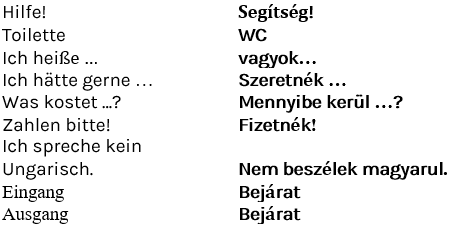Interesting facts about the language
The Hungarian language belongs to the Ugric branch of the Finno-Ugric languages within the Uralic language family. Hungarian is widespread in southern Central Europe and is spoken by over 13.5 million people; other estimates put the number at up to 15 million.
Hungarian is the official language of Hungary and, since May 1, 2004, one of the official languages of the European Union. Unlike most European languages, Hungarian does not belong to the Indo-European language family and is therefore not closely related to them.
The Hungarian alphabet has more letters than the German alphabet. If you count the letters in the Hungarian alphabet, you will come up with 44. A special feature of the Hungarian alphabet is that it also includes digraphs and a trigraph. A digraph is a letter made up of two letters. In Hungarian, there are the following digraphs: cs, dz, gy, ly, ny, sz, and ty. A trigraph is the combination of three letters. In Hungarian, this is the letter combination dzs. Hungarian has more vowels than German: a distinction is always made between vowels that are pronounced long (á, é, í, ó, ő, ú, and ű) and vowels that are pronounced short. In Hungarian, long vowels are marked with a diacritical mark above the letter – above a long vowel you will always find a slash pointing upwards to the right.
Demo version
Learn Hungarian for free for two days. Try the course and see for yourself how much faster you can learn Hungarian than you ever thought possible. Discover how learning Hungarian is finally fun and easy—and how this course truly motivates you to learn every day. You'll be surprised at how much you'll learn in just two days!
Country info Hungary
Hungary is a landlocked country in Central Europe. Located in the Pannonian Basin and crossed by the Danube River, it borders Austria, Slovakia, Ukraine, Romania, Serbia, Croatia, and Slovenia. The capital and largest city is Budapest. Other major cities include Debrecen, Miskolc, Szeged, Pécs, and Győr. Approximately 9.8 million people live in Hungary.
Sehenswürdigkeiten in Ungarn
On the following websites you will find information about the most beautiful sights in the country.
Benefits of learning the language!
- You will find your way around when you are on holiday in Hungary.
- You broaden your horizons and thereby expand your educational level.
- You improve your career opportunities.
- They contribute to integration.
- They ensure better communication in bilingual relationships.
- This way you get to know a lot of people and can communicate with each other.
What’s special about the language course
- The language course is suitable for beginners, advanced learners and those returning to the language.
- Within 3 months you can learn the basic vocabulary of over 1,300 Hungarian words.
- With the basic course you will reach levels A1 and A2 of the Common European Framework of Reference for Languages.
- With the advanced course you will reach levels B1 and B2 of the Common European Framework of Reference for Languages.
- With the technical vocabulary you will reach levels C1 and C2 of the Common European Framework of Reference for Languages.
- Short daily learning time of only 17 minutes a day.
- The daily tasks are given to you and what you have already learned is repeated until it is stored in your long-term memory.
- Learn with different learning methods.
- You don't want to learn alone! Join learning communities and make new connections.
Online Sprachkurs:
- Neueste Version: Die Sprachkurse wurden im Jahr 2020 vollständig überarbeitet.
- Für Windows, Linux, Mac OS, iPhones, Android-Smartphones, IPad und Android-Tablets.
- Über 540.000 Sprachkurse wurden bereits verkauft.
- Software Made in Germany
The most important words in Hungarian
Hungarian Part 1
Hungarian Part 2
Ungarisch Teil 3
How good is my Hungarian?
Find out how good your Hungarian is by taking the free online Hungarian test! Have you already acquired some Hungarian language skills and would like to refresh or improve your Hungarian? Not sure which language course (at which level) is right for you? In just 3 minutes, you can find out where you fit into it: This Hungarian language test follows the guidelines of the Common European Framework of Reference for Languages (CEFR). Based on these recommendations from the Council of Europe, you can see at which level (A1 - C2) you should learn Hungarian.








